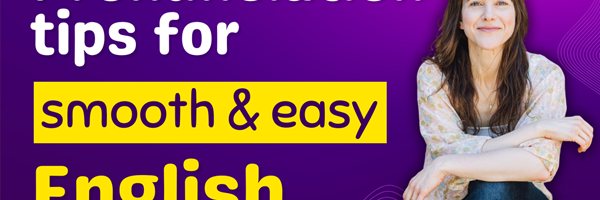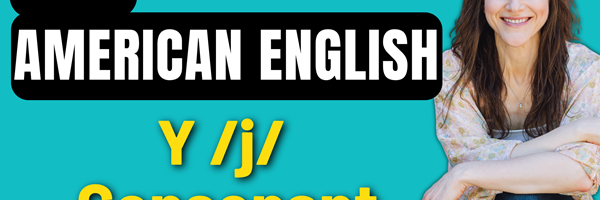(Video Transcript)
Really
Green
Around
Let’s learn how to pronounce the R consonant sound in American English.
The R consonant sound. This is quite possibly the hardest sound to pronounce in American English. Why?
Well, for starters, you can’t see what the tongue is doing when you make this sound.
RR, RR, RR
The tongue is hidden from view, and this makes it challenging to imitate.
American R /ɹ/ versus the flap
Second, the R sound is made very differently in other languages, so you may be using the R from your native language when you speak American English. For example, in languages like Spanish, Arabic, and Hindi, the R sound is a flap. The flap is made by quickly flapping the tongue tip against the alveolar ridge.
Flap, Flap, Flap
But in American English, this flap sound is either the T or D sound, like in the words water and ladder.
The American English R is very different from the flap.
RRR
Flap, flap, flap
When making the American English R, you can hold out the sound for as long as you have air: RRRRRR. You can’t do this with the flap.
RRRRRRRRR
Flap
The American English R also uses the lips, as they come forward and flare away from the teeth. The flap does not use the lips, so the lips are relaxed.
RRRRRR
Flap, Flap, Flap
How to pronounce the R /ɹ/ consonant
Now let’s focus on how to make the American R sound.
There are two ways to make the American R, and we’ll start with the way that I pronounce the R sound.
You begin with the tongue in a wide shape. To position your tongue in a wide shape, think about making the EE vowel.
EEE
And stretch your tongue so that the sides of the tongue either touch the side teeth or push against the inside of the side teeth, like this:
EE, EE
That is the type of tongue width that you want when making the American R sound. The tongue is not narrow, like this:
It is wide.
Now with a wide tongue, you simply arch the middle portion of the tongue up towards the palate as you slide the tongue back. The sides of the tongue should make contact with either the inside of the back teeth or the sides of the roof of the mouth as the tongue slides up and back. It looks like this (show with hand)
The tip of the tongue should be in the middle of the mouth. It doesn’t curl up towards the roof of the mouth or point down. The tip of the tongue just pulls back with the rest of the tongue. The tip of the tongue doesn’t touch anything. If it touches something, you’ll hear a flap sound.
And that is not the American R - that’s a different R.
The lips also participate in this sound. The lips come forward and flare away from the teeth, while the tongue arches up and pulls back. So you’ll feel two movements happening: lips move forward, tongue moves back.
The lips round into a tighter circle when the R comes at the beginning of a word or syllable, like in the word right, or when it’s part of a group of consonants, like in the word bread.
But when the R comes after a vowel at the end of a word or syllable, the lips are a little more relaxed.
Bunched R versus Retroflex R
The American R that I’ve just described to you is how I pronounce the R consonant sound. It’s called the bunched R because the tongue pulls back into itself into a bunched position.
However, there is a second way to make the American R sound, with the tongue tip curled up towards the roof of the mouth. Everything else is the same - the tongue is still wide and the sides of the tongue still push against the inside of the upper back teeth, and the lips still come forward and flare away from the teeth.
It sounds like this:
RRRR
This is called the retroflex R. Some native speakers use the retroflex R position, and some use the bunched R position. Either way, it still sounds like an R consonant sound. However, I don’t use the retroflex R position, and I don’t teach the retroflex R to my students. Here’s why:
If your native language uses a flapped R, like Spanish, Hindi, and Arabic, you are much more likely to continue to flap your tongue tip against the roof of the mouth if you pronounce the American R with a retroflex, or curled, tongue position. In this position, the tongue tip is very close to the roof of the mouth, so it’s too easy for it to make contact with the roof of the mouth.
I teach the bunched R position to my students because that is the way that I pronounce the American R sound, and I think it results in a better sounding R.
The retroflex, or curled, R sounds muffled, like something is blocking the airflow.
RR, RR, RR
But the bunched R sounds cleaner and more precise, at least to my ears.
RR, RR, RR
Watch an animation of the R consonant sound. This animation was created from an actual video of a real person pronouncing the R sound. The animation shows the side view of the person's face, and I slowed it down to half speed. This particular native speaker uses the bunched R, so you’ll see the tongue arch up towards the palate and the tongue tip will pull back into the tongue.
When making the R consonant sound, you should feel vibration in your throat because it is a voiced sound. This means the vocal cords are turned on as you say it.
But be careful not to retract your tongue into your throat, like this:
RR, RR, RR
Or drop your jaw as you retract your tongue, like this:
RRR, RR, RR
The R sound should feel like it’s made at the very top of the roof of the mouth, where the tongue arches up, and the jaw does not help with this movement. The jaw drops just a little bit, but it does not move back with the tongue.
If you feel too much tension in your throat or too much jaw movement,
RR, RR,
then you’re focusing on pulling the tongue too far back, and you’re relying on your jaw to help move the tongue. Instead, focus the movement in the tongue itself as the middle of the tongue arches up towards the hard palate. Relax the throat muscles.
Let’s take a closer look at the R consonant sound.
R /ɹ/ consonant in slow motion
Here is the R consonant in isolation. Notice how the lips move forward and flare away from the teeth. You can’t see it, but the tongue is wide and pulls up and back as I pronounce the R sound. The tongue tip is in the middle of the mouth, not touching anything. The jaw drop is minimal. The throat is relaxed, but the vocal cords do vibrate.
Now the word right. Here the R sound is at the beginning of the word, so the lips round into a tighter circle. The tongue movement is the same: tongue is wide and the middle of the tongue arches up towards the hard palate. The sides of the tongue push against the inside of the upper back teeth as the tongue slides back. The tip is in the middle of the mouth, not touching anything.
Now the word bread. Same lip movement and tongue movement as before. Since the R is part of a consonant cluster, the BR cluster, the lips round into a tighter circle as the middle of the tongue arches up towards the palate and slides back. The movement of the tongue is controlled by the tongue itself; not the jaw. The jaw drop is minimal.
Now the word teacher. When the R consonant comes at the end of a word or after a vowel in the same syllable, we call this an R colored vowel. This happens in the word teacher. Notice how the lips are more relaxed when pronouncing the ER R colored vowel.
Let’s look at the lip position of the R consonant when it comes at the beginning of a word, like in the word right, versus when it comes at the end of a word, like in the word teacher. Notice the lips are rounded in a tighter circle when the R is at the beginning of the word right, and the lips are more relaxed when the R is at the end of the word teacher.
When practicing the R consonant sound, think of three important things:
One, the lip movement. The lips come forward and round or flare away from the teeth as you pronounce the R consonant.
Two, the tongue movement. The tongue is wide, and the middle arches up towards the palate as the sides of the tongue push against the upper teeth. This movement is controlled by just the tongue, not the jaw. The jaw drop is minimal.
Three, the tongue tip. The tongue tip does not touch anything.
Remember that you can hold out the American R, like this:
RRRRRR
So when you practice the R consonant sound, go slowly and hold out the sound, like this:
RRRRRRRight
Brrrrrrread
Teacherrrrrrrrrrrrr
Practice: R /ɹ/ consonant
Let’s practice a few words together. Say the words with me.
Ready, R, ready
Arrange, R, arrange
Crazy, R, crazy
Computer, ER, computer
Thanks so much for practicing the R consonant sound with me. I hope this video was helpful! But we don’t have to end the practice here - let’s keep working together! Check out the additional practice videos of the R consonant sound in English Pro, my comprehensive online accent training community. The details on how to enroll in English Pro are in the description below. Thanks, and have a great day!
And I'd love to hear from you - contact me to learn how we can work together to perfect your American English pronunciation!



